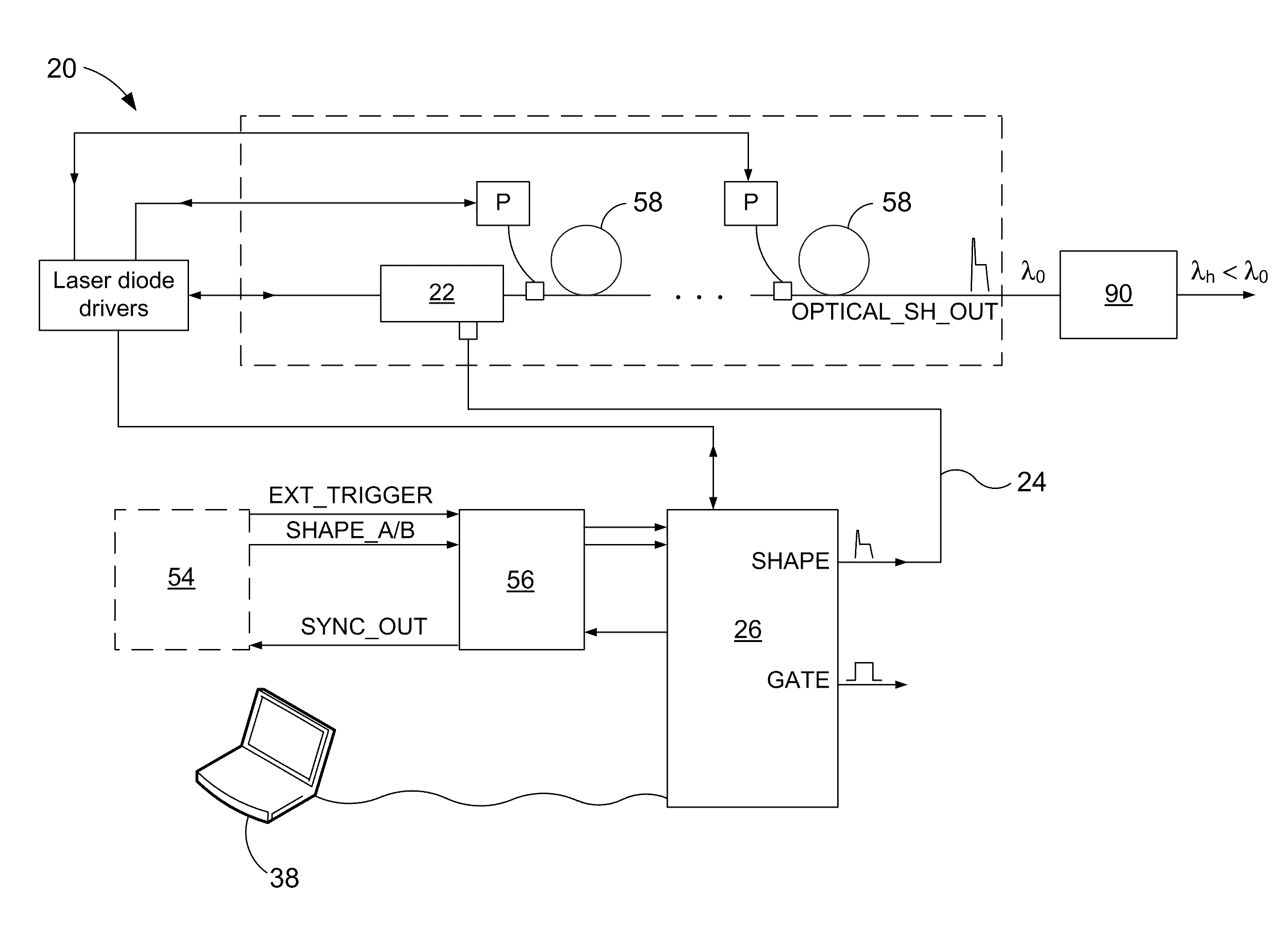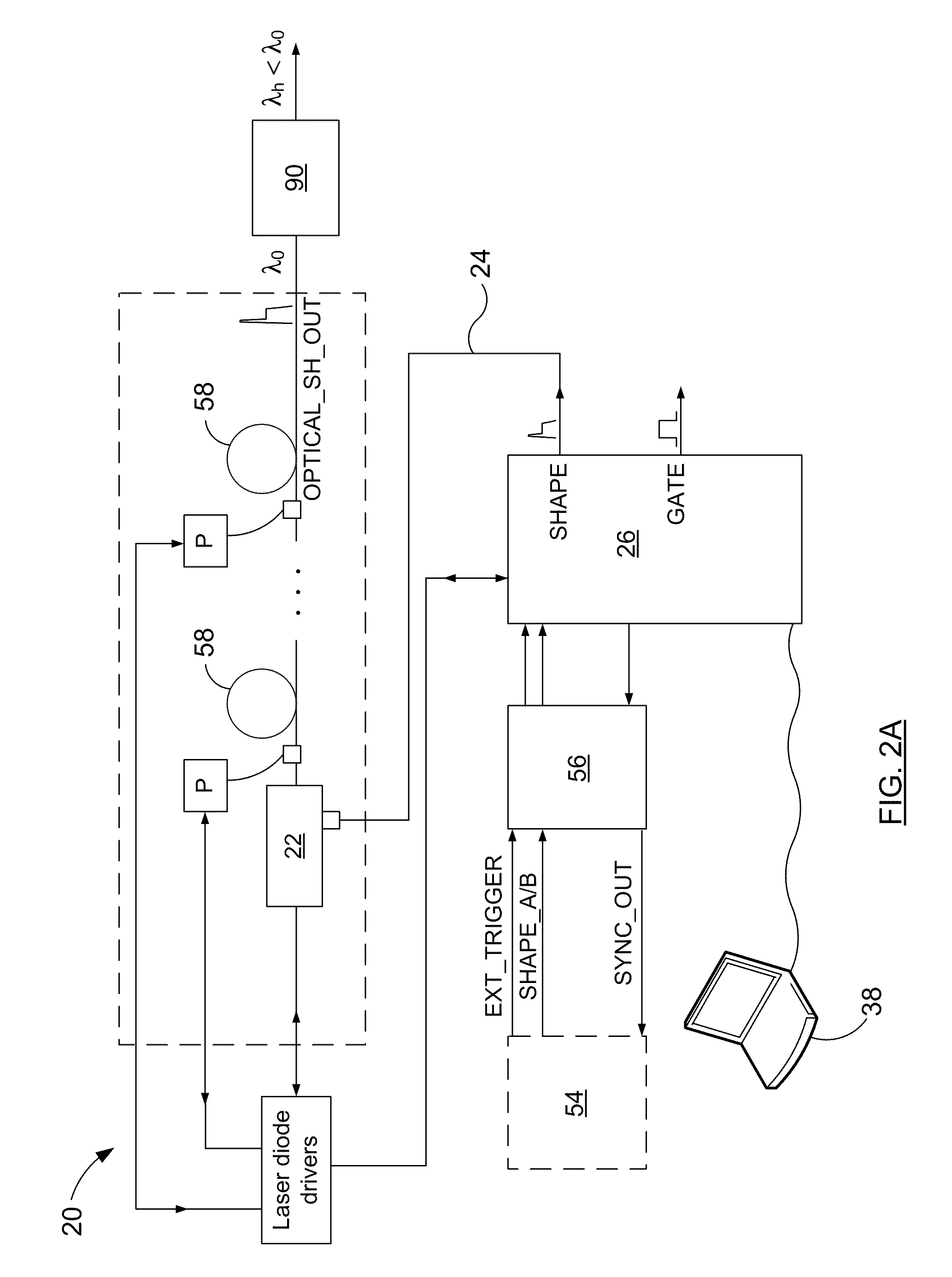Method for stablizing an output of a pulsed laser system using pulse shaping
- Summary
- Abstract
- Description
- Claims
- Application Information
AI Technical Summary
Benefits of technology
Problems solved by technology
Method used
Image
Examples
examples
[0058]The section below provides examples of pulse shaping signals incorporating processing and conditioning periods according to embodiments of the invention. Of course, it will be readily understood that these examples are given for illustrative purposes only, and are in no way considered limitative to the scope of the present invention.
[0059]FIG. 3A (PRIOR ART) shows an example of an OPSP containing 43 temporal bins, as could be readily programmed as explained above. The amplitude profile is characterized by six main intervals in the time domain with uneven durations, denoted by Δt0, Δt1, Δt2, Δt3, Δt4, Δt5 and Δt6, the programmed amplitude being adjusted to a specific and constant value for each interval. There are four non-zero distinct amplitude values, denoted by V1, V2, V3 and V5, corresponding to the time slots Δt1, Δt2, Δt3 and Δt5, respectively. In the given example, the time slots Δt0, Δt4 and Δt6 contains 7, 8 and 8 bins respectively, with all amplitudes set to zero. In...
PUM
 Login to View More
Login to View More Abstract
Description
Claims
Application Information
 Login to View More
Login to View More - R&D
- Intellectual Property
- Life Sciences
- Materials
- Tech Scout
- Unparalleled Data Quality
- Higher Quality Content
- 60% Fewer Hallucinations
Browse by: Latest US Patents, China's latest patents, Technical Efficacy Thesaurus, Application Domain, Technology Topic, Popular Technical Reports.
© 2025 PatSnap. All rights reserved.Legal|Privacy policy|Modern Slavery Act Transparency Statement|Sitemap|About US| Contact US: help@patsnap.com



